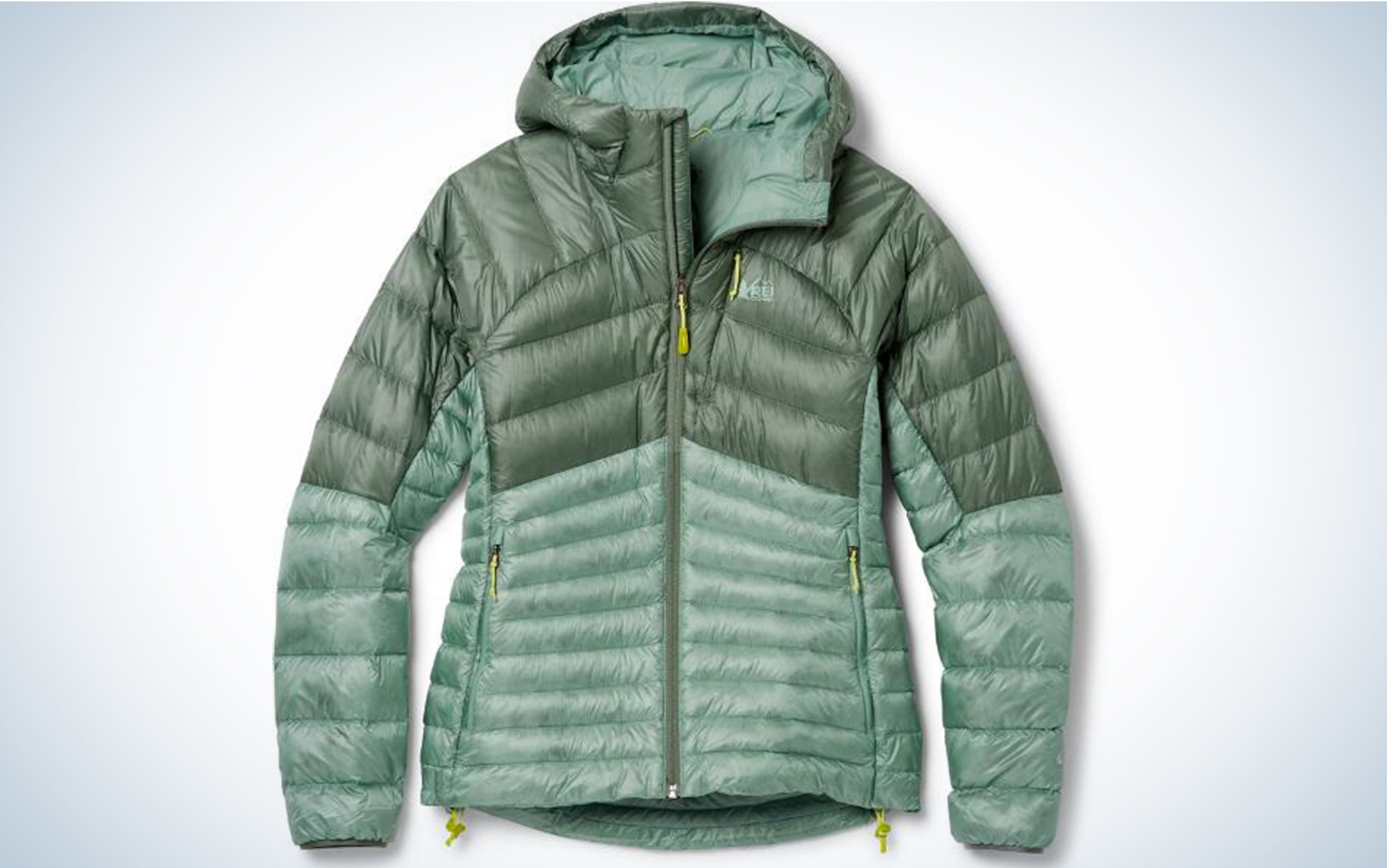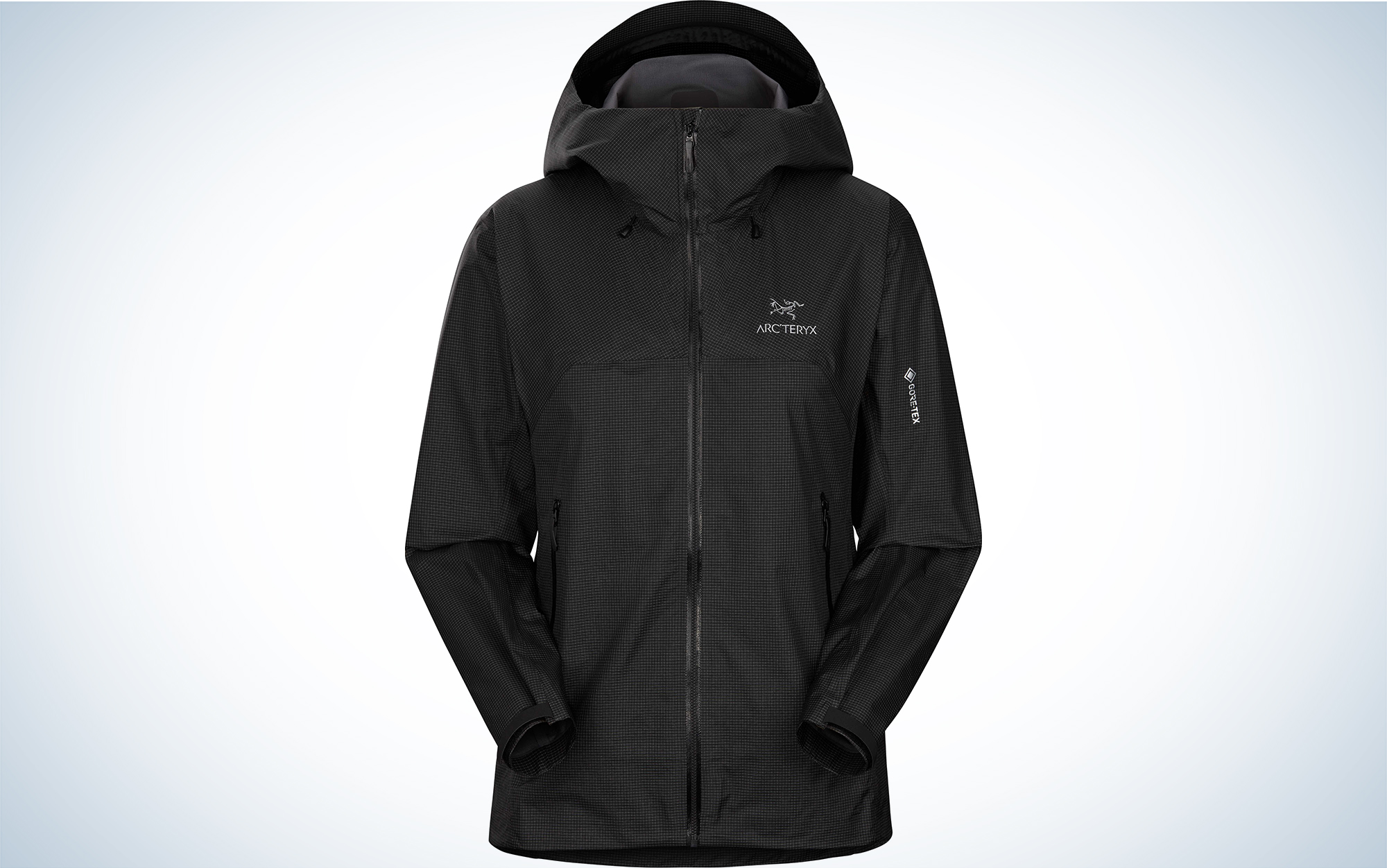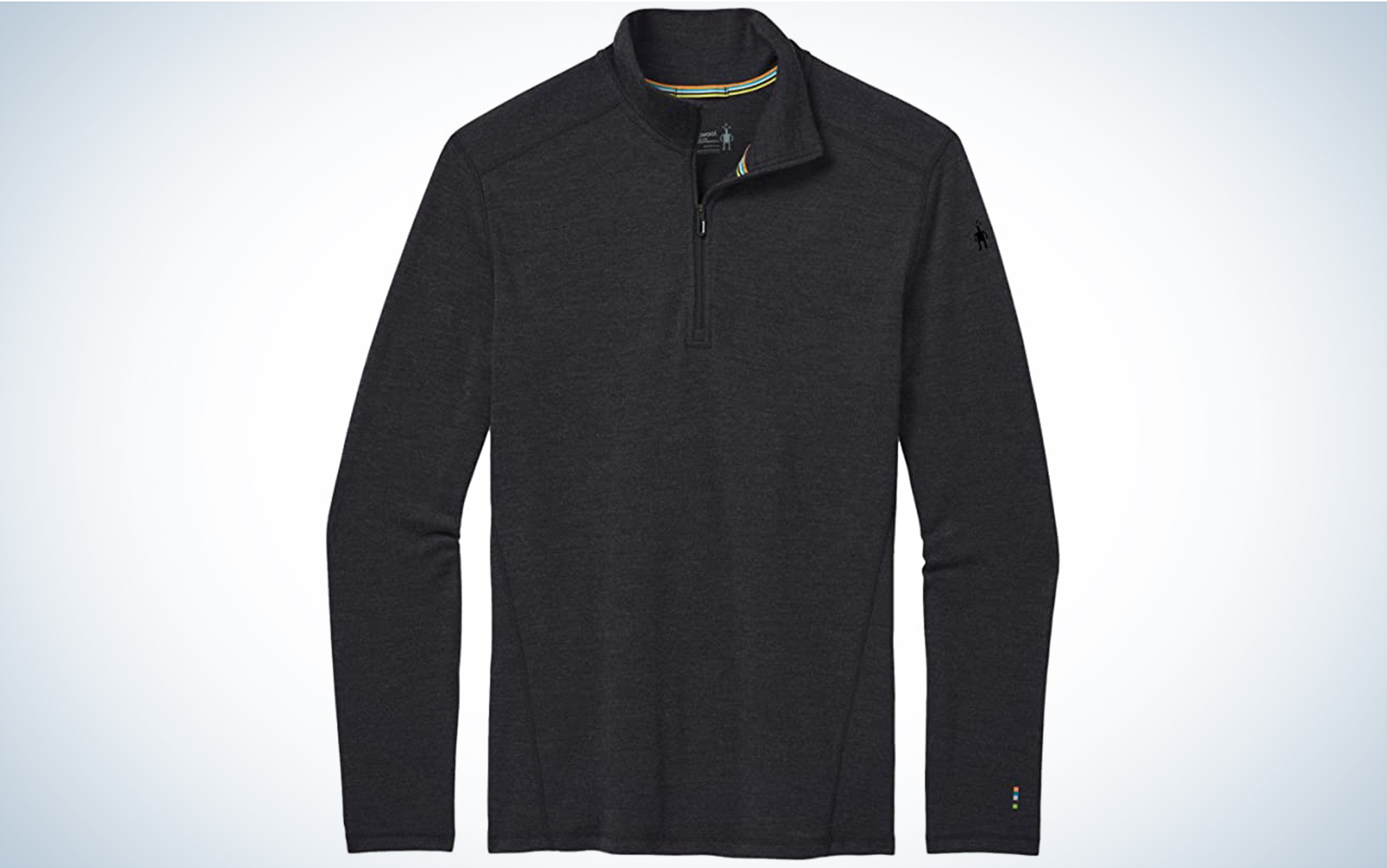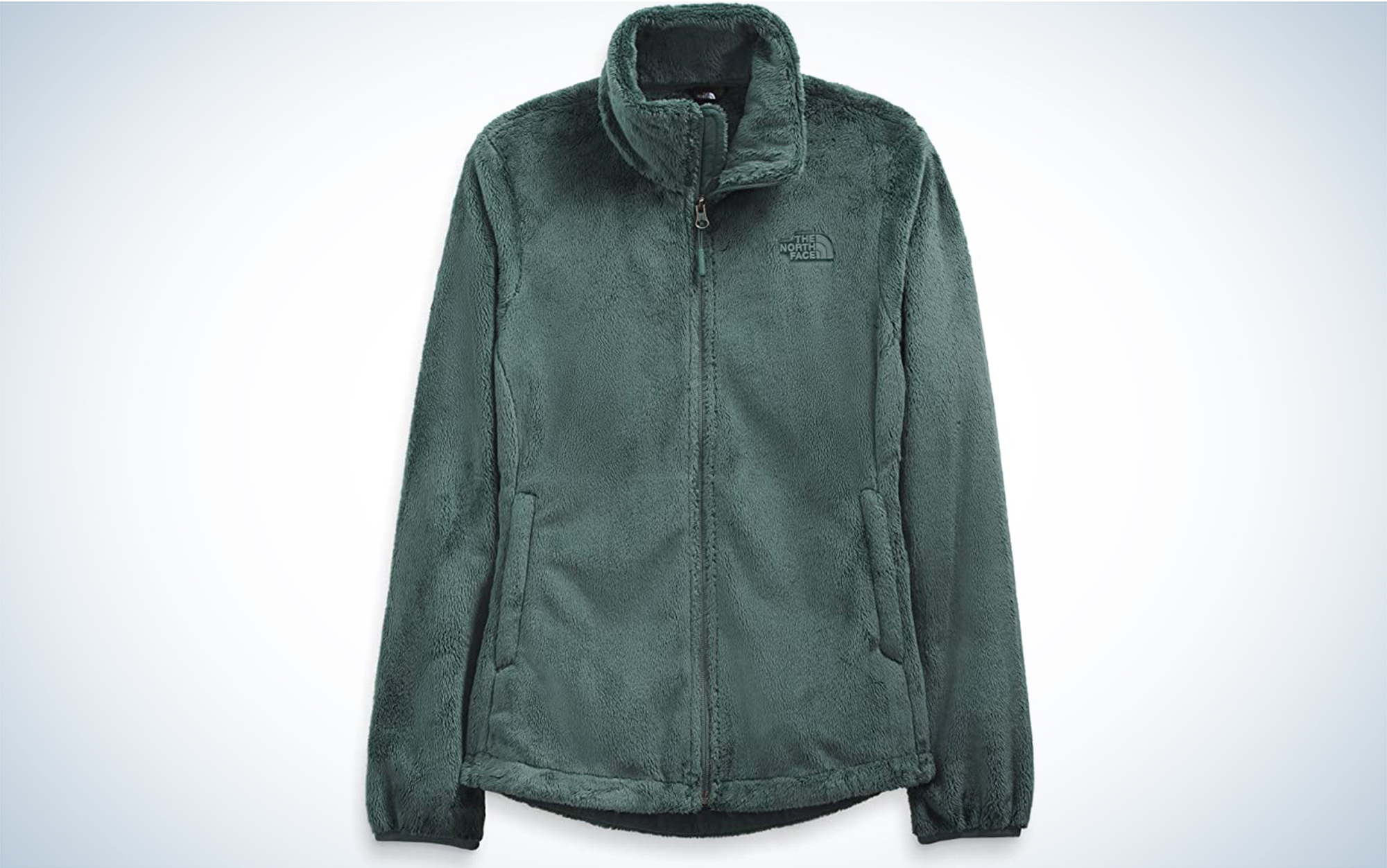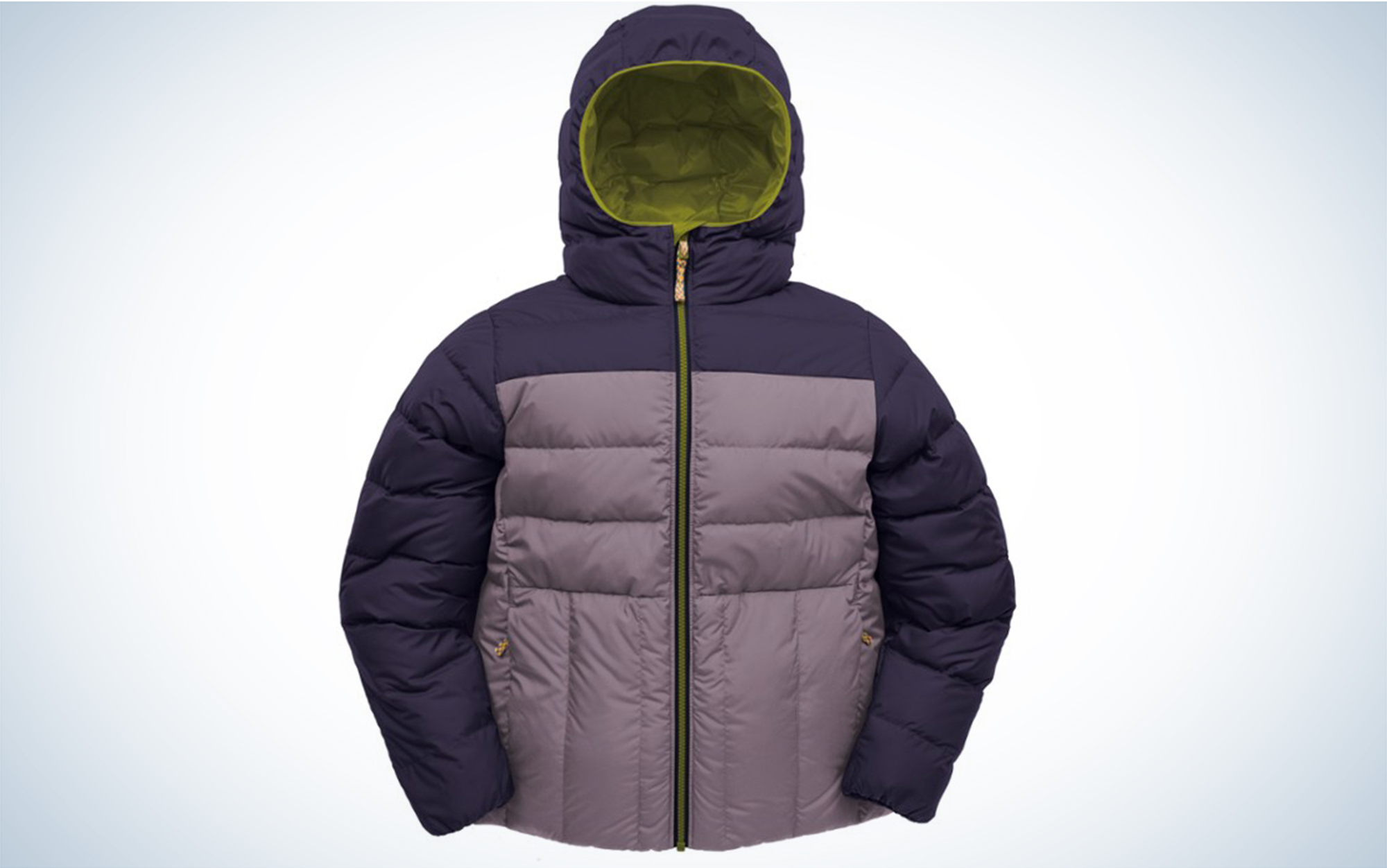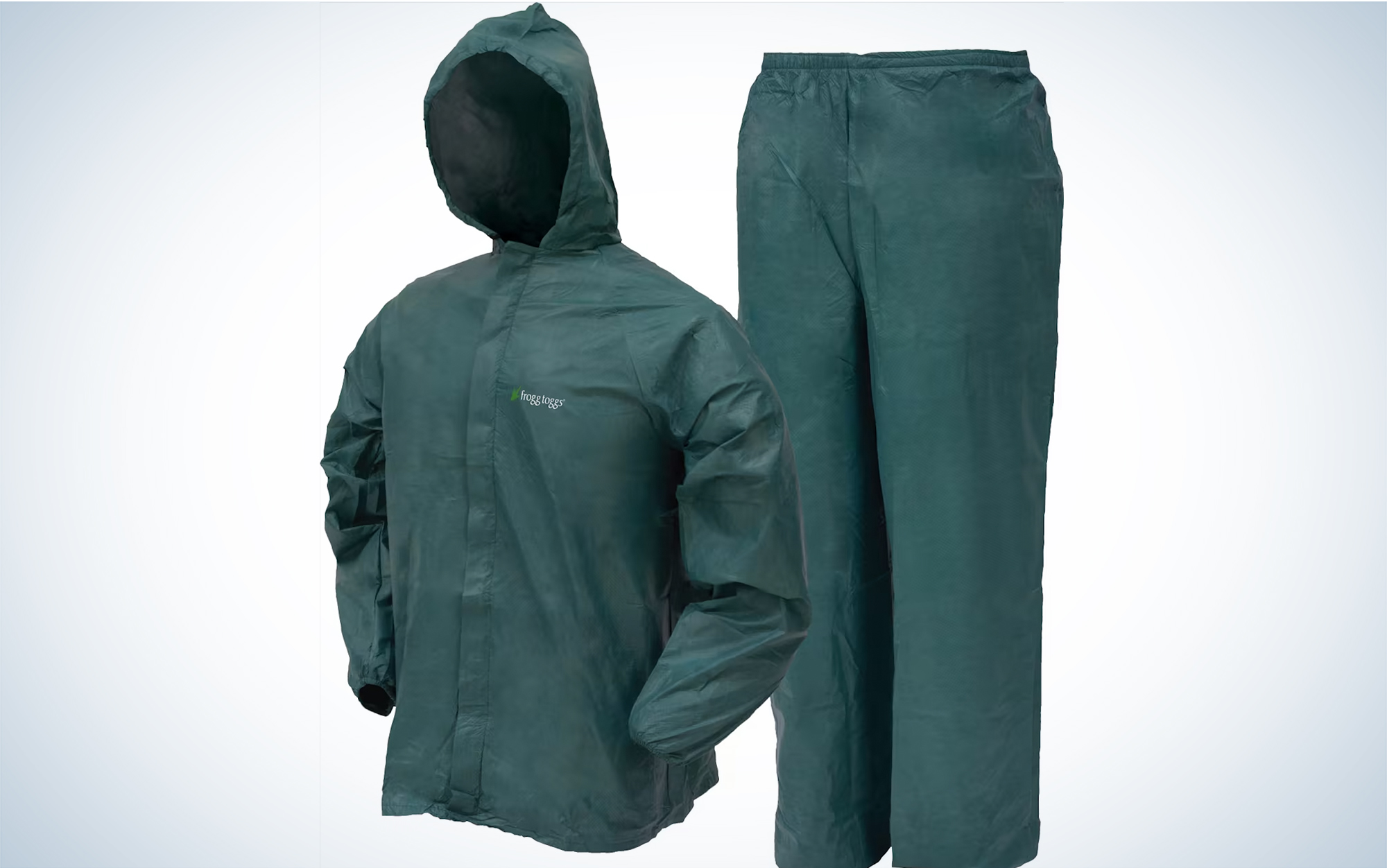We may earn revenue from the products available on this page and participate in affiliate programs. Learn More ›
Published Feb 1, 2023 3:00 PM
Let’s face it; buying a hiking jacket is unnecessarily complicated. Softshells, puffer jackets, hybrid hoodies, rain jackets, fleece sweaters, wind shells, mid-layers, hardshells—how many of these do you need, anyway? The good news is that you really only need three layers for hiking: a base layer, an insulation layer, and a rain shell (with an optional fleece layer). The Outdoor Life team has been testing hiking layers for years, and rounded up our picks for the best hiking jackets to help you hit the trails.
Testing the Best Hiking Jackets
The term “hiking jacket” is a bit of a misnomer. Hikers and backpackers typically have multiple jackets (called layers) that they use to protect themselves from different weather conditions like rain, wind, cold, and sun. What layers you need will typically depend on the environment you recreate in—southwestern hikers will focus more on sun and cold, while those in the Pacific Northwest will need protection from wind and rain. To help you sift through the available options, I’ve pulled together some of our top picks from in-depth testing we’ve done on the best backpacking rain jackets, best puffer jackets, and best base layers for hunting.
The Best Hiking Jackets: Reviews & Recommendations
Best for Cold Weather: Big Agnes Women’s Luna Jacket/Men’s Shovelhead
Key Features
- Sizes: Men’s and women’s XS-XXL
- Weight: 16 ounces (men’s), 15 ounces (women’s)
- Material: Recycled 20D nylon (shell), 700fp RDS-certified down (fill)
- Two zip pockets at waist
- Hooded
Pros
- Extremely warm
- Thumbholes at the end of the sleeves
- Generous hood and collar
Cons
- Somewhat heavy
- May be too warm for uphill climbs
Getting to the summit of a hike is always a big moment: the elation, the views….and the chill. As soon as you pop above treeline, that wind can hit like an icy wall. And then there’s the sweat from the climb up that’s now bringing your core temperature down. More often than not, hikers spend less time than they’d like to at the summit, opting instead to get low again so they can warm back up.
That’s where the Big Agnes Luna and Shovelhead come in. Whereas other puffer jackets are concerned with weight or layering ability, this puffer jacket is stuffed with enough 700fp down to feel like your upper body is wrapped in a sleeping bag (and Big Agnes is well known for their quality sleeping bags). In fact, this puffer is packed with so much down that the first few times I wore it wisps would poke out of the shell—something that usually only happens with sleeping bags (don’t worry, this stopped happening pretty quickly).
With the Luna (the women’s version of this coat), I was never cold during testing, much of which took place during an unusually wet and cold spring in the Pacific Northwest. But there are a few other reasons I keep grabbing this puffer jacket. The first is a generous hood that can easily accommodate a hat or helmet underneath. I can also pull the high collar up to my nose. It’s worth noting that this extra protection did not obscure my vision at all. This Big Agnes puffer also has thumb holes at the cuffs—something I appreciated while making coffee at dawn on particularly cold spring days.
Best Value: REI Co-op Magma 850 Down Hoodie
Key Features
- Sizes: Men’s and women’s XS-3X
- Weight: 13.75 (men’s), 11.5 ounces (women’s)
- Material: Nylon (shell), 850fp RDS-certified down (fill)
- Two zip pockets at the waist, one zip pocket at the left chest
- Hooded
Pros
- Great value
- Warm enough for shoulder season and alpine hiking
- Good range of sizing options
Cons
- Not as warm as our best pick for cold weather
I’ve recommended this puffer jacket more than just about any other piece of gear for one simple reason: It’s a great value. While there are other lighter and higher fill puffer jackets available, this one hits the sweet spot of price and function. Similar fill puffer jackets from other brands often cost hundreds of dollars more, and most don’t come in the range of sizes that the Magma 850 does.
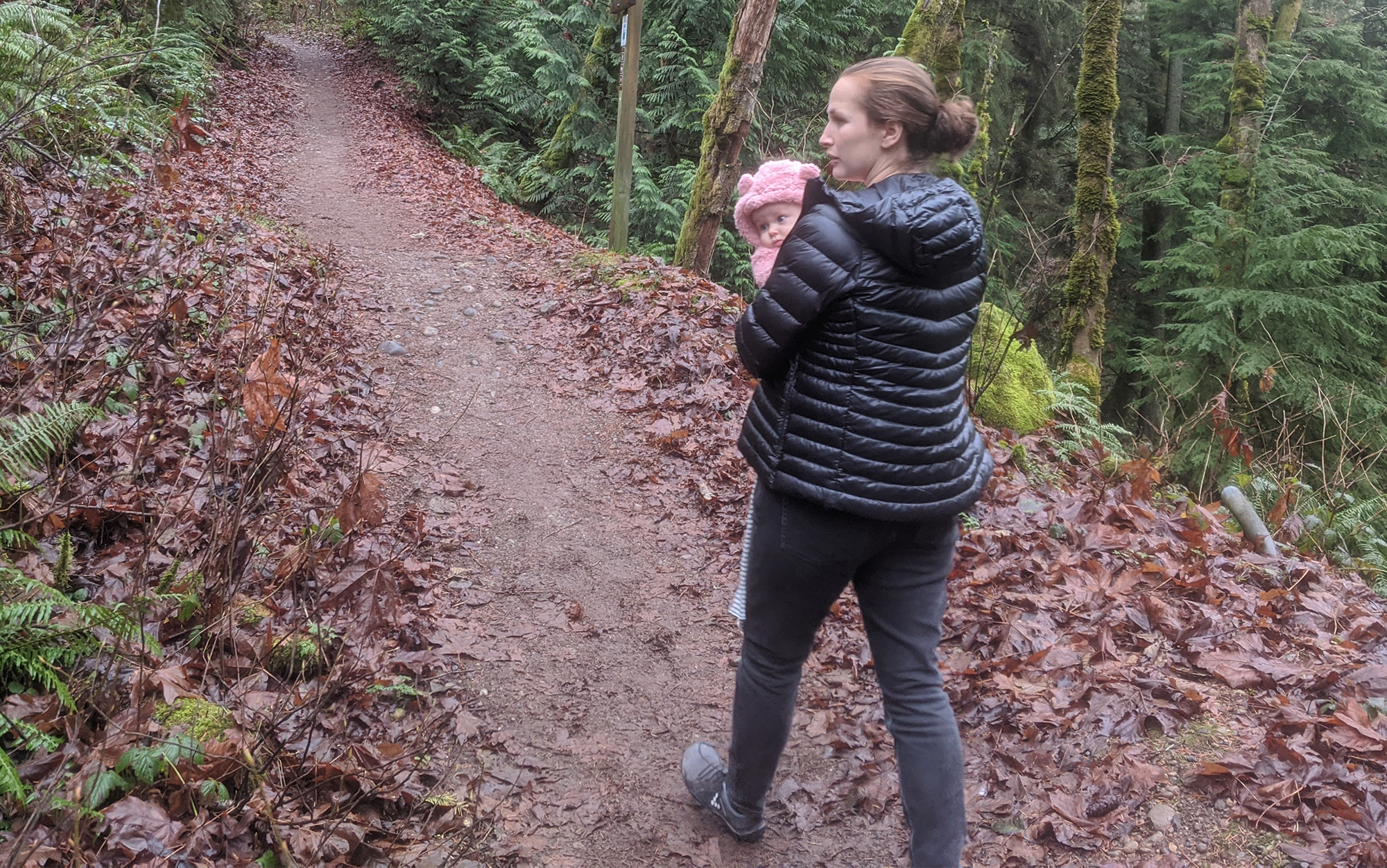
While this puffer jacket isn’t as warm as the above best pick for cold weather, it will still get plenty of use in your gear closet. Most hiking occurs in warmer weather—too warm for a true winter-ready puffer like the Big Agnes Luna and Shovelhead. This puffer jacket has enough fill to keep you warm at elevation during early mornings in the summer, but packs down small and lightweight enough to stuff in an outer pocket on your day pack as you start to warm up.
Best Rain Jacket: Arc’teryx Beta LT Hadron
Key Features
- Sizes: Men’s XS-XXXL, women’s XXS-XXL
- Weight: 8.5 ounces
- Material: 3L GORE-TEX
- Pockets: Two zip pockets at the waist
- Hooded
Pros
- Most waterproof jacket in my test of the best rain jackets
- Most wind-resistant jacket in my test of the best rain jackets
- Durable
Cons
The Arc’teryx Beta LT was the most waterproof, wind-resistant jacket in our test of the best rain jackets for backpacking, and incorporated a number of features that guaranteed that not one inch of your insulation layer or base layer will get wet. The generous hood (even the puffiest of puffers will fit under this one) has cinch cords both at the back and by the chin so that you can get a secure fit, while the cuffs have velcro tabs that you can tighten when the wind picks up or loosen again when you need to cool off a bit. This was also one of the few jackets that I looked at that incorporated a noticeable drop-tail hem.

There are a few downsides to the Arc’teryx Beta LT. Individuals who work up a sweat easily will likely notice the lack of pit zips (the zippers that run underneath your armpits) while UL purists will scoff at the weight—at least until they land in their first serious downpour. But the biggest one is the price, which is over a hundred dollars more than the next closest jacket I looked at and 15 times more expensive than my budget pick.
Best Base Layer: Smartwool Thermal Merino Base Layer 1/4 Zip
Key Features
- Sizes: Men’s S-XXL, women’s XS-XL
- Weight: 10.5 ounces (men’s), 8.3 ounces (women’s)
- Material: Merino wool
- No pockets
- No hood
Pros
- Excellent moisture wicking
- Odor resistant
Cons
- Too warm for the height of summer
This was OL’s pick for the best merino wool base layer for hunting, and this advice stands for hiking as well. The reason why merino wool is such a great fabric for a hiking base layer is that it retains heat, effectively wicks away moisture, and is odor resistant. This will help you manage your core temperature over the first hour of your hike, when chilly outdoor air is competing with the internal heat your core is building up, and then expelling as sweat.
This thermal layer is perfect for hikes above treeline or in the shoulder season, but if you’re starting at mid-morning at the height of summer it may be on the heavy side. In those instances, it may be better to go with a thinner layer with shorter sleeves, such as our recommendations for the best hiking shirts.
Best Fleece: The North Face Osito/Campshire
Key Features
- Sizes: Men’s S-3X, women’s XS-3X
- Weight: 19 ounces (men’s) 11.1 ounces (women’s)
- Material: Polyester
- Two zip pockets at waist
- No hood
Pros
- Warm enough for cold-weather hiking
- Water resistant
- Soft and comfortable
- Durable
Cons
- An optional layer for hikers in colder climates
Fleece is not one of the three primary layers (base, insulation, rain), but it is an excellent layer to have on hand if you live in either a very cold or very wet climate. Fleece often acts a bit of a go-between for your three main layers. It provides a significant amount of insulation, if not as much as a puffer coat. It also repels some water and stays surprisingly warm once it is wet, and it can help to regulate your core temperature. So while not a replacement for any of the aforementioned layers, it can enhance their properties in more extreme conditions.
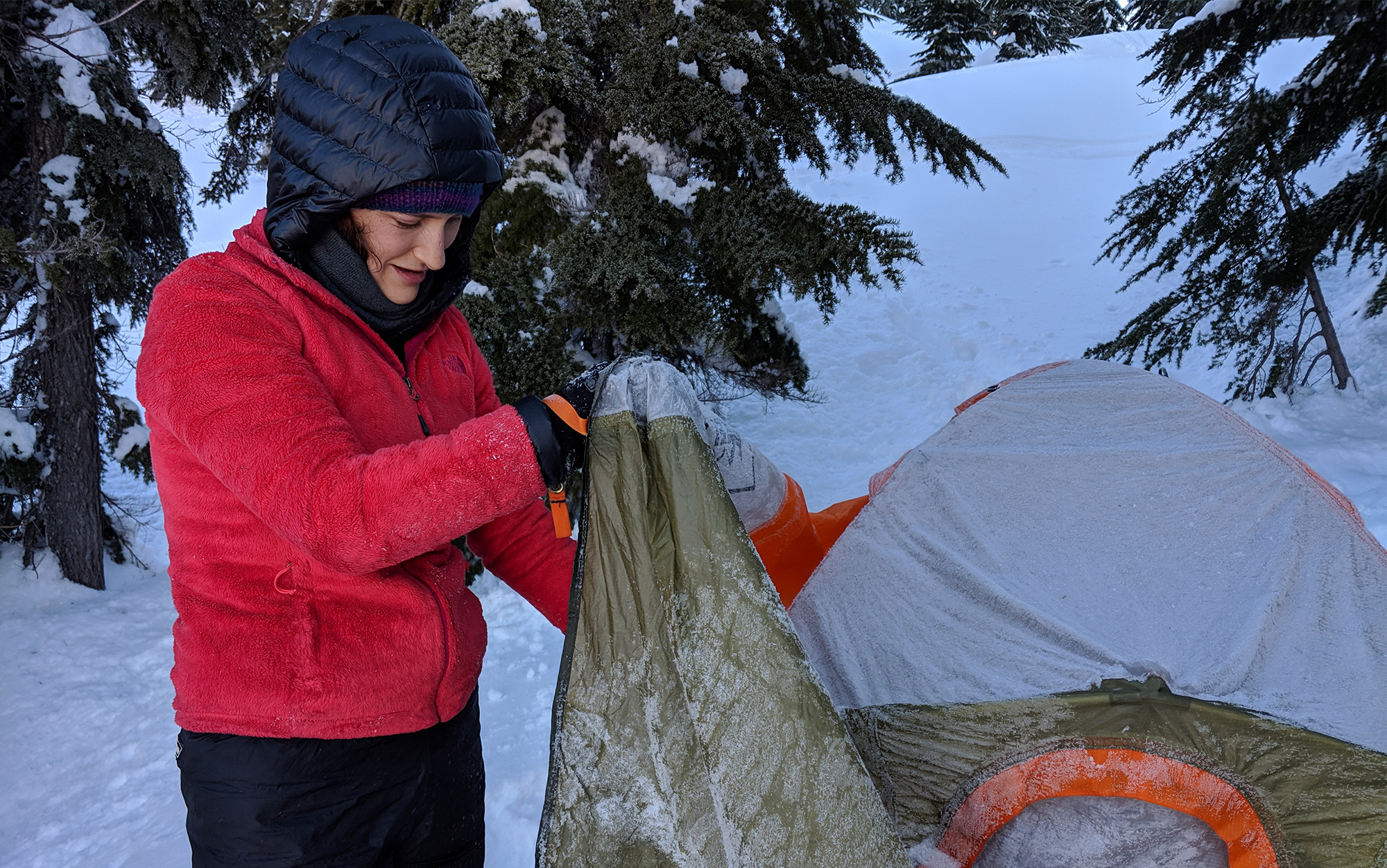
I’ve had The North Face Osito in my closet for almost a decade now and it’s still one of my favorites. Where I live in the Pacific Northwest it can often be both cold and wet at the same time, so this fleece frequently goes in between my rain shell and my puffer jacket. Over the years, this fleece has picked up nary a hole, and—if not good as new—is still surprisingly soft.
Best for Kids: Big Agnes Kids’ Ice House Hoodie
Key Features
- Sizes: XXS-LG
- Weight: 12 ounces (medium)
- Material: Nylon (shell), 600fp RDS-certified down
- Two zip pockets at waist
- Hooded
Pros
- One of the warmest puffer jackets for kids available
- Extremely durable
- Smallest size fits older toddlers
Cons
- No matching Ice House puffer pants (please?)
Finding high-quality outdoor clothing for kids can be challenging, as plenty of pint-sized apparel is built with the idea that you’re going to take a break from your outdoor pursuits now that you’re a parent. But you aren’t, are you? So the best hiking jacket for kids needs to be able to keep up with the gear we already have for ourselves.
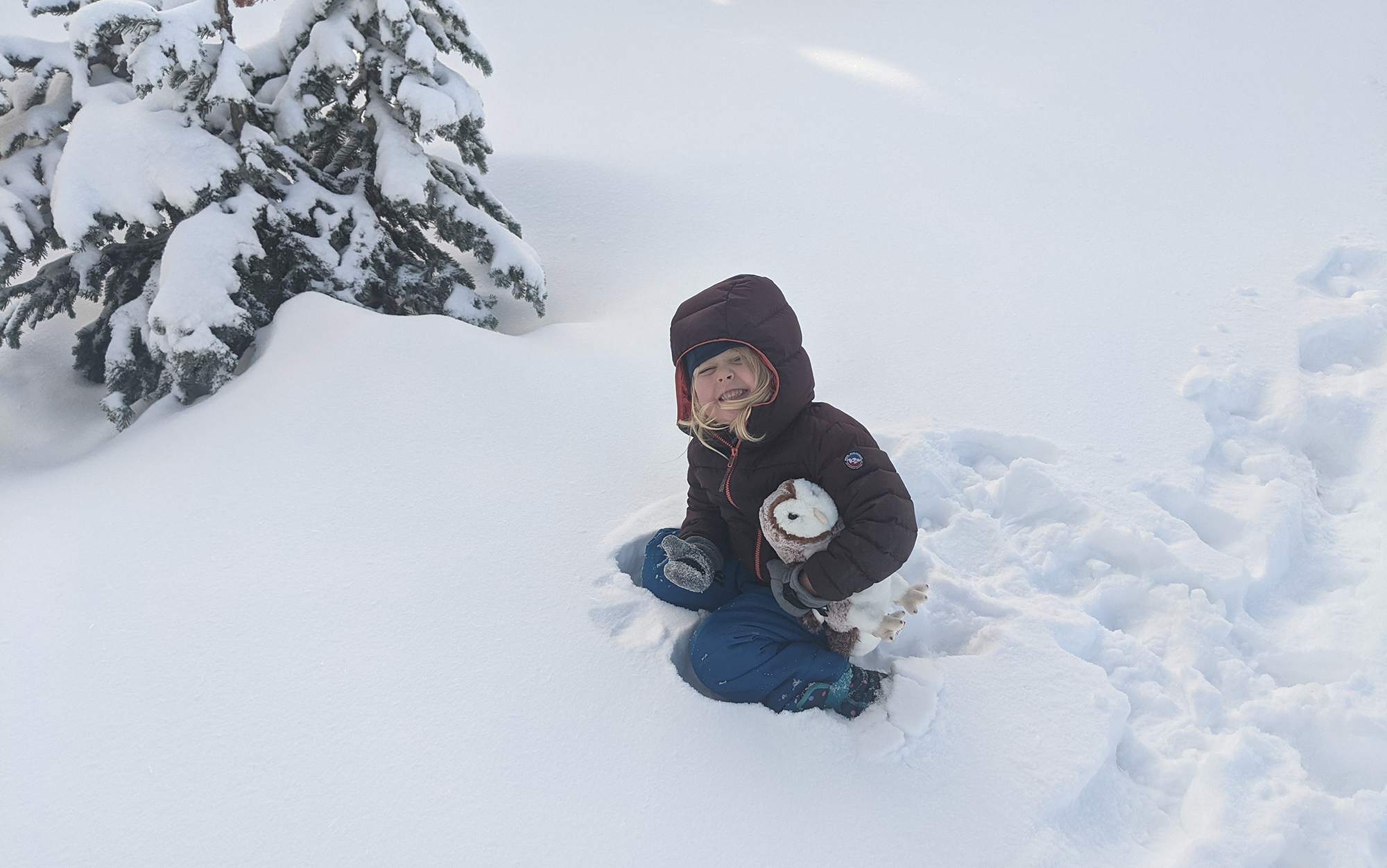
That’s what the Big Agnes Ice House is. I’d say it’s like the mini version of the Luna/Shovelhead puffer jacket, since it shares some basic design similarities, including the generous hood and collar, drop-tail hem, and lots and lots of puff (600fp vs. the 700fp of the adult version). But honestly the Ice House might be even better. In the year plus that my three-year-old has been wearing this coat, it’s been through the wringer: snow, rain, wind, mud, blood, sand, juice spills, peanut butter, pasta dinners. I’ve never washed it. It still looks great. But perhaps most importantly, she likes going outside when she’s wearing it, and she likes wearing it when she’s outside. Now if only I could get her some puffer pants that were of similar quality.
Best Budget: Frogg Toggs Ultra-Lite Suit
Key Features
- Sizes: Men’s S-XXXL, women’s S-XXL
- Weight: 4.6 ounces
- Material: DriPore Gen 2
- No pockets
- Hooded
Pros
- Very lightweight
- Inexpensive
- Comes with rain pants
Cons
- Not waterproof in stormy conditions
- Less durable than other rain jackets
I know what you’re thinking: “I’m not going hiking when it’s raining, so I’ll skip that layer.” Take it from me; this is a mistake. Whether it’s a mid-afternoon Rockies squall or an unexpected microburst on the eastern seaboard, you need to be prepared for rain when you head out on a hike. Fortunately, there is a way to add this layer to your arsenal without adding much weight and spending very little money: the Frogg Toggs Ultra-Lite Suit.
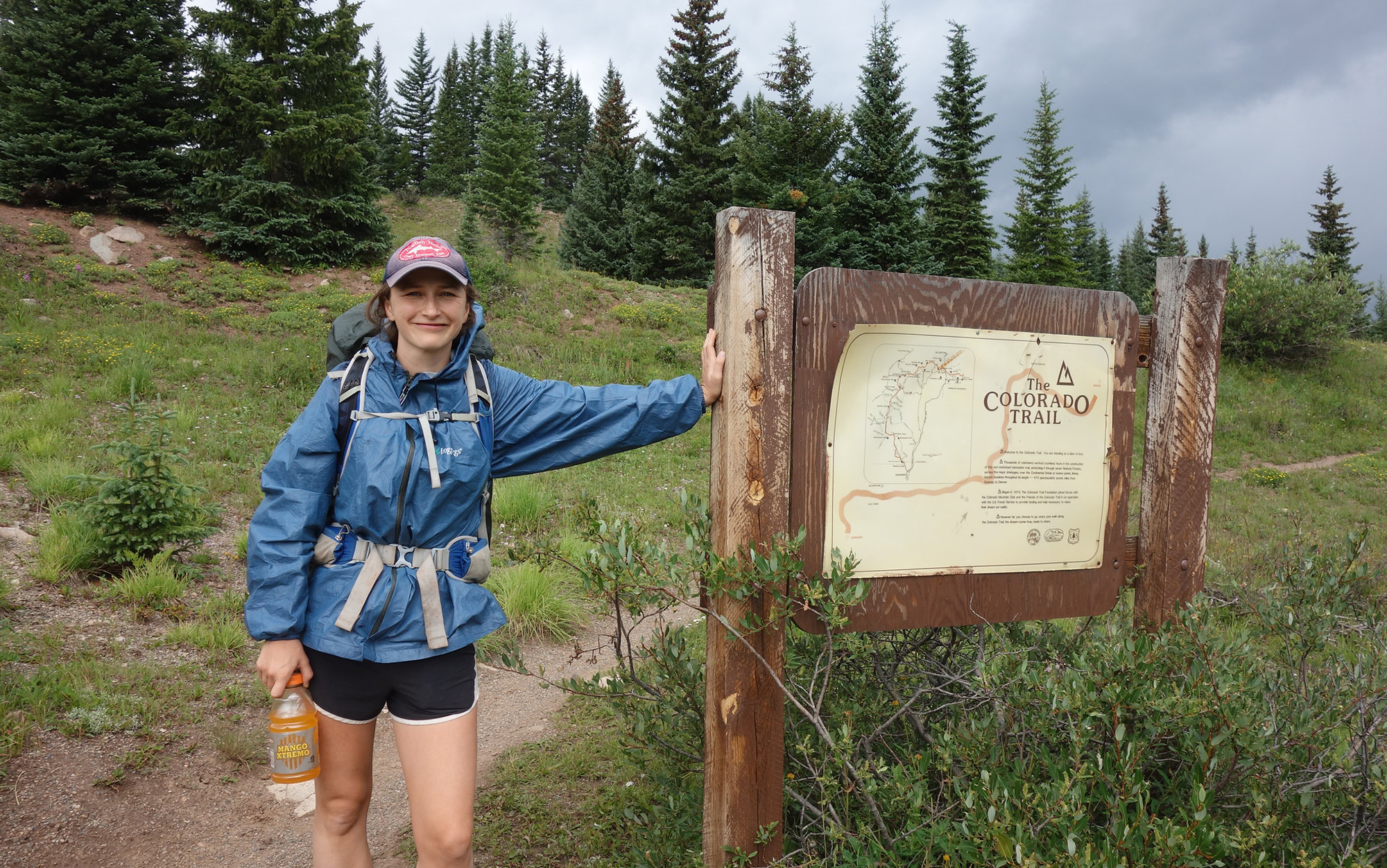
Dollar for dollar, the Frogg Toggs Ultra-Lite Suit provides the best protection of the many great rain jackets for the outdoors currently available. Partly because the Frogg Toggs are extremely cheap, but also partly because these are a pretty good shell layer. While the jacket performed the worst in the shower test (a less robust front zip seems to have been the failure point), there was no leakage during the 24-hour waterproofing test, and they also proved surprisingly wind resistant. The downside to this jacket is that it’s not especially durable, but since you’re planning to leave this in your pack the vast majority of the time, that won’t be much of an issue.
How to Choose the Best Hiking Jacket
Most hikers and backpackers have a number of hiking jackets in their arsenal, which they’ll layer depending on what the current weather is. If you’re new to hiking and want to learn more about how layering can help you stay comfortable, check out our guide to layering for hiking. Most hikers will want, at a minimum, three layers:
Base Layer
The base layer is the layer closest to your skin. Its primary function is to help regulate your body temperature as outdoor conditions change and your exertion level increases. The base layer does this by wicking away moisture from your skin. Most base layers are made from merino wool or synthetic materials like polyester and nylon.
Insulation Layer
Your insulation layer is there to keep you warm, typically with either goose down or a synthetic fill meant to mimic goose down, such as Primaloft.
When purchasing insulation layers made with goose down, look for Responsible Down Standard (RDS) certification, or an equivalent such as Advanced Global Traceable Down Standard, as these standards help to ensure the ethical treatment of animals used for down. Another useful standard is bluesign certification, which checks for air and water pollution, including that caused by PFAS materials.
Shell Layer
Finally, the shell layer is there to protect you (and your other layers) from the elements, including wind, rain, and snow. Gore-tex is a common shell layer material.
FAQs
Q: What are the different types of hiking jackets?
The main three types of hiking jackets are base layer, insulation layer, and shell layer.
Q: Are hiking jackets different from ski jackets?
While there are a number of jackets that are sold for skiing specifically, plenty of people (myself included) use the same layers for winter hiking that they do for skiing. Jackets designed specifically for downhill (or resort) skiing resemble heavy shell layers, with some insulation built into them. That can make them a bit warm for hikers with long climbs in front of them. Jackets designed for touring or backcountry skiing are typically much more expensive than hiking or backpacking shell layers. They are designed to both breathe during heavy exertion (think uphill skinning) and protect you from snow. They will typically wet out faster than a true shell layer in heavy rain.
Q: Are hiking jackets different from hunting jackets?
While there are a number of jackets that are sold for hunting specifically, many of these layers can also be used for hiking. Like hikers, hunters face a range of conditions in the outdoors, and any of our top-rated hunting jackets for women could be used by hikers. There are a few differences, however. Since hunters tend to be on the move somewhat less than hikers, some of these layers may be too warm for a typical hiker. Hunting layers are also designed to maximize stealth. They’re quiet and come in neutral colors or camo. Hikers do not need to be stealthy, and in fact it may be safer to wear loud colors so that you are easier to distinguish from the surrounding environment.
Q: What are hiking jackets made of?
Hiking jackets are made out of a number of different materials, depending on what layer it is and what climate or weather condition it’s intended for. These can include, but are not limited to, nylon, polyester, merino wool, goose or duck down, and Gore-tex.
Q: How do rain jackets for hiking keep you dry?
While Gore-tex is to shell layers as Kleenex is to tissues, there are a number of waterproofing materials that rain jackets for hiking use to keep you dry, with names like Shakedry, Omni-Dry, and HyVent. Many of these are proprietary to a particular brand. While in the past many rain jackets for hiking relied on PFAS (think teflon) to provide lightweight waterproofness, there is a shift away from these chemicals as people learn more about the damage they do to human health and the environment.
Q: How should a hiking jacket fit?
How a hiking jacket should fit depends on what layer it is. Base layers should fit anywhere from snugly to a bit loose, to maximize the material’s (whether its merino wool or synthetic) wicking ability. Insulation layers should fit somewhat loose, as you want the down or synthetic down equivalent to have room to puff out, but not so loose that it’s easy for a draft of wind to sneak under the hem. Rain jackets should fit fairly loosely, in order to accommodate the different layers you are likely to pack underneath them.
Why Trust Outdoor Life?
Since 1898, OL has been a leading authority in testing and reviewing hunting gear, fishing tackle, guns and shooting equipment, and much more. We have more than a century-long history of evaluating products, and we’re now bringing that expertise to online reviews. Our editors are experienced outdoorsmen and women, and most importantly, we’re trained journalists. We prioritize field testing and objective data when reviewing products. We conduct interviews with gear manufacturers and engineers as well as outdoor experts so that our readers have an understanding of how and why a product works—or doesn’t.
Advertising does not influence our gear reviews and it never will. While we always focus our coverage on standout products—because we want our readers to be aware of the latest and greatest gear—we also cover the flaws and quirks of any given product.
Final Thoughts
The best hiking jackets allow you to mix and match layers to achieve optimal comfort across a range of conditions. Our recommendations are a great starting point for choosing layers that are versatile and durable enough to last for years.

